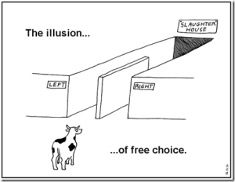1 The Changing Nature of Careers
We cannot direct the wind, but we can adjust the sails
Dolly Parton
 Learning Objectives
Learning Objectives
On completion of this chapter you should be able to:
- Analyse the drives responsible for the move from the modern to the postmodern organisation.
- Understand the internal and external labour market and how this influences organisational policies.
- Evaluate the positive and negatives of the contemporary career.
- Evaluate the impact of the move to individualisation and risk transference in the workplace.
Introduction
If a job is a specific work role that individuals hold for a period of time, a career can be defined as ‘the individually perceived sequence of attitudes and behaviors associated with work-related experiences and activities over the span of the person’s life’ (Hall, 1976, 12). This definition highlights the importance of the individual in constructing their own story of their career over time. This story is framed around individual career-related decisions, those that are considered important for the organisation and, just as importantly, what values and motivations (intrinsic and extrinsic) individuals have over the lifespan of their career; this is the most accepted idea of a career (Feldman and Bolino, 1996).
For almost 40 years now, labour markets in industrialised countries have been undergoing profound changes from a modern to postmodern economy. The most striking of these changes are, the increase in the proportion of skilled workers and the corresponding deterioration in the employment and pay prospects of less skilled workers (Katz and Autor, 1999), completely new types of jobs being created at a high rate, high levels of under-employment (Australian Bureau of Statistics, 2017), more part-time jobs being created than full-time jobs (Trading Economics, 2018), and the gig economy and casualisation of the workforce, which dominate in some industrial sectors (Abraham et al., 2017).
Labour Markets
Within traditional supply and demand models of labour markets, the conventional understanding suggests that job competition and associated benefits are directly controlled by economic variables (Osterman, 2011), and individual workers make few investments in jobs or relationship (Watcher and Wright, 1990). This system is known as the external labour market (ELM) and is common for many organisations. The main merits of an ELM are that open competition provides a wider choice for appointments, and that outsiders bring new ideas to an organisation.
The ELM is contrasted with an internal labour market (ILM), in which posts are filled mainly by promoting existing employees. The main merits of ILMs are that individuals within an organisation are likely to know more about the strengths and weaknesses of the company than outsiders, and that having a reputation for internal promotion may assist in recruitment and retention of staff. Additionally, organisations with strong ILMs have recruitment, advancement, salary, benefits, and job design that are governed by published policies and procedures and a job’s wage is determined by its characteristics (Doeringer and Piore, 1971). ILMs tend to be strongest in organisations and sectors with good collective bargaining. This leads to competition between organisational efficiency and maximising individual benefits to staff (Granovetter, 1981). Although ILMs can be created with strong unionisation, there is some evidence that unionisation leads to reduced salary compared with the ELM. Negotiations are often skewed towards deferred benefits such as superannuation, or fringe benefits such as vacation time, rather than current pay and rewards. In this context then the direct economic benefits of the ELM (i.e. salary) is transformed into other types of benefit that some individuals rate more highly than salary (Watcher and Wright 1990). However, Hirsch and Shanley (1996) did argue that ILMs are too slow to match employee needs within a firm and that the ELM allows an organisation to move more quickly in response to the changing external environment, a proposition supported by the work of Zhou, Dekker and Kleinknecht (2010). ILMs tend to be found in large bureaucratic organisations in all sectors (corporate, not-for-profit, and the public sector).
Jobs and careers are carried out within specific organisations that have their own structures, rules and cultures, including in human resource management. As such there is often a close and mutual relationship between individual and organisational career management activities (Gander et al., 2019), although it remains unclear how these may influence individual workplace behaviour and how these may be changing in light of contemporary career theories (Sturges et al., 2005). The context in which careers are experienced is also likely to have an influence on career progression.
Traditional Organisational Careers
Pre-1970, organisational design was based on rational bureaucracy, formality, hierarchy, and rule-reliance (Arnold and Cohen, 2013; Kanter, 1977). This organisational model was dependent for its success on dealing with a predictable external environment. It was also built around the heterosexual and nuclear family and the male model of work – the man went out to work, worked long hours, was the only, or main, breadwinner, and the woman stayed at home to run the household (with this work not actually being recognised as work of course!). In this era, male careers were based on the premise of long-term security with loyalty from both the employee and employer, with employees moving through an orderly vertically organised career ladder with career success measured according to hierarchical position, salary, status and responsibility (Kanter, 1977).

Figure 1.1 Ad from the 1950s “Don’t worry darling, you didn’t burn the beer!” (in the public domain).
This traditional organisational career was arguably the major form of employment until the early to mid-1990s with employers (both private and public sectors) providing long-term employment and guaranteed benefits in return for high-commitment and high-productivity. However, extensive economic changes in the 1970s and 1980s led to organisations downsizing and de-layering to reduce costs, with many shifting from a vertical to a more horizontal organisational design, with the perceived need to develop generalists, and not just specialists, in order to respond to instability and change (Kanter, 1977).
It was argued that from the 1980s organisational design changed from the modern to the postmodern (Sullivan and Baruch, 2009; Nichols, 2007). Additionally, the workforce was changing with women entering the labour market at an exponential rate from the 1980s (Ortiz-Ospina and Tzvetkova, 2017). This needed to be reflected in new career models, and major new conceptual models were developed based on constructivist approaches to career theory, that is that individuals constructed their own social realities (Savickas, 1993; Sharf, 2013), which was the most important aspect of understanding people’s decision-making processes and career stories.
Contemporary Organisational Careers
In recent decades, more dynamic careers have become apparent due to the collapse of long-term secure careers. Employees now develop their careers through horizontal shifts between multiple organizations (Arnold and Cohen, 2008; Arthur and Rousseau, 1996). This type of career, in which employees must take responsibility for their own employability is becoming more dominant in the labour market (Vuori, et al., 2011), with employees having flexible contracts and changing jobs more often (forced and by free will). The contemporary career can be defined as one where individuals are free agents, not loyal to any one organisation, and who can move easily between organisations. Individuals are now motivated not solely by external success measures such as position title or salary but also by intrinsic satisfaction especially in terms of contributing to the ‘greater good’. Characteristics of the contemporary career are mobility, flexibility, the need for meaningful work, self-actualisation, autonomy, skill development, skill utilisation, work-life balance and fulfilling relationships across organisations (Briscoe et al., 2006; Forrier et al., 2005). A career path in the contemporary organisation would include hierarchical and lateral moves, plateauing, periods outside of the labour market and career changes. Individuals therefore require external marketability and self-efficacy in their career attitude (Briscoe, et al., 2006). These contemporary careers place the emphasis for career development on the individual, a reaction against the traditional organisational career seemingly at odds with the postmodern organisational era. This emphasis on career self-management highlights the concept of individual responsibility for continuing employment and career success, as there is no longer a promise from the organisation of a supported organisational career (Sturges et al., 2005).
All good?
The global economic, technological and cultural changes discussed above have resulted in a move to individualisation and responsibilisation. For ‘the sake of their own material survival’ individualisation requires people to ‘make themselves the centre of their own planning and conduct of life’ (Beck, 1992 in Rawolle et al., 2017, 111–112). This resulted in a move from a paternalistic society towards an individualised society where ‘responsibility for bearing the burden of risk is not shared equally’ (Beck, 1999 in Rawolle et al., 2017, 113). It has been argued that although this move towards individualisation is a move towards freedom of choice, in fact individuals don’t have a freedom of choice but only a forced choice between a few alternatives. Other scholars have argued that individualisation provides freedom and autonomy (Roper et al., 2010). This argument between boundaried choices and individual agency plays out in a number of career theories.

Figure 1.2 ‘The illusion of choice’ ©Abstruse Goose CC BY-NC 4.0.
It should be emphasised here that organisations have seemed to gain the most in terms of the move towards individualisation and the contemporary career. They are able to employ a temporary workforce, increasing and decreasing it as desired, and setting terms and conditions that are becoming increasingly disadvantageous to individuals (Tims, 2017; Worthington and McDonald, 2017; O’Donnell et al., 2016). They can increasingly demand multiple skillsets, with individuals needing to maintain skills and qualifications, often at their own expense, to ensure ongoing employability.
Due to all of these changes the concept of organisational careers is in flux, with multiple new career theories being presented over the last two decades (Gubler et al., 2014), with many scholars arguing that the organisational career is dead (for example, Peiperl and Baruch, 1997). Many of those scholars have now accepted that career theory moved ahead at a faster pace than actual lived careers, and it is recognised that organisational careers are still relevant in today’s economy although having changed from the traditional organisational career (Gander, 2021).
In Summary
To conclude then, organisational careers have changed drastically since the 1990s, when the traditional model of male careers – loyalty to an organisation, long-term tenure, paternalistic career management, and extrinsic measures of success started to wane due to global economic, technological and socio-cultural changes. It is important to understand how organisational external and internal labour markets work, with benefits and disadvantages of both models being apparent and how this affects individual benefits. Modern and postmodern organisational models were outlined, with the impact of this being seen on organisations themselves and on individual careers with the move to an individual employment risk profile. In the next chapter we will now look at the graduate employability market.
 Key Takeaways
Key Takeaways
- The traditional organisational career model based on modernism, has given way to the contemporary organisational career model based on postmodernism.
- The above has been driven by global economic, technological and socio-cultural changes and have resulted in labour market transformation.
- External labour markets, with the ability of employers to respond to the market in terms of, for example salary and benefits, have responded with less secure work, higher salaries for highly skilled workers and reduction in salaries for unskilled workers.
- Internal labour markets, with their traditional payoff of lower salaries but better long-term benefits, have also been eroded with the reduction in power of unions.
- These interacting changes have led to increased pressure on individuals to manage their own employability and to take on the risks associated with insecure employment.
References
- Abraham, K. G., Haltiwanger, J. C., Sandusky, K., and Spletzer, J. R. (2018). Measuring the Gig Economy: Current Knowledge and Open Issues. Cambridge: National Bureau of Econmic Research. https://www.nber.org/papers/w24950.
- Arnold, J. and Cohen, L. (2013). Careers in organizations. In: Handbook of Vocational Psychology: Theory, Research, and Practice, Eds. W. B. Walsh, M. L. Savickas, and P. J. Hartung. Hove: Routledge.
- Arthur, M. B. and Rousseau, D. M. (1996). Introduction: the boundaryless career as a new employment principle. In: The Boundaryless Career: A New Employment Principle for a New Organizational Era, Eds. M. B. Arthur and D. M. Rousseau. New York: Oxford University Press.
- Australian Bureau of Statistics. (2017). Spotlight on Underemployment. http://www.abs.gov.au/ausstats/abs@.nsf/Lookup/6202.0Main Features5Nov 2016.
- Briscoe, J. P., Hall, D.T., and Frautschy DeMuth, R. L. (2006). Protean and Boundaryless careers: an empirical exploration. Journal of Vocational Behavior, 69(1): 30–47. https://doi.org/10.1016/j.jvb.2005.09.003.
- Doeringer, P. J. and Piore, M. J. (1971). Internal Labour Markets and Manpower Analysis. Washington: Manpower Administration. https://files.eric.ed.gov/fulltext/ED048457.pdf.
- Feldman, D. C. and Bolino, M. C. (1996). Careers within careers: reconceptualizing the nature of career anchors and their consequences. Human Resource Management Review, 6(2), 89–112. https://doi.org/10.1016/S1053-4822(96)90014-5.
- Forrier, A., Sels, L. and Verbruggen, M. (2005). Career counseling in the new career era: a study about the influence of career types, career satisfaction and career management on the need for career counseling. SSRN Journal, 1: 37. https://doi.org/10.2139/ssrn.878279.
- Gander, M. (2021). The hybrid career concept: creating hybrid career pathways. Career Development International, 26(7), 853–868. https://doi.org/10.1108/CDI-07-2020-0189.
- Gander, M., Girardi, A. and Paull, M. (2019). The careers of university professional staff: a systematic literature review. Career Development International, 24(7), 597-618.
- Granovetter, M. (1981). Toward a sociological theory of income differences. In: Sociological Perspectives on Labor Markets, Ed. I. Berg, New York: Academic Press.
- Gubler, M., Arnold, J., and Coombs, C. (2014). Reassessing the Protean career concept: empirical findings, conceptual components, and measurement. Journal of Organizational Behavior, 35(S1): S23–40. https://doi.org/10.1002/ job.1908.
- Hall D. T. (1976). Careers in Organisations. Pacific Palisades: Goodyear Publishing.
- Hirsch, P. M., and Shanley, M. (1996). The rethoric of boundaryless – or, have the newly empowered managerial class bought into its own marginalization. In: The Boundaryless Career: A New Employment Principle for a New Organizational Era, eds. M. B. Arthur and D. M. Rousseau. New York: Oxford University Press.
- Katz, L. F. and Autor, D. H. (1999). Changes in the wage structure and earnings inequality. In: Handbook of Labor Economics, Eds. C. Orley and D. C. Ashenfelter. Amsterdam: Elsevier (1463-1555). https://doi.org/10.1016/S1573-4463(99)03007-2.
- Kanter, R. M. (1977). Men and Women of the Corporation. New York: Basic Books.
- O’Donnell, P., Zion, L., and Sherwood, M. (2016). Where do journalists go after newsroom job cuts? Journalism Practice, 10(1): 35–51. https://doi.org/10.1080/17512786.2015.1017400.
- Ortiz-Ospina, E. and Tzvetkova, S. (2017). Working Women: Key Facts and Trends in Female Labor Force Participation. Our World in Data. https://ourworldindata.org/female-labor-force-participation-key-facts.
- Osterman, P. (2011). Reconsidering Institutional labor economics. Industrial and Labor Relations Review, 64 (4): 637–653.
- Rawolle, S., Rowlands, J., and Blackmore, J. (2017). The implications of contractualism for the responsibilisation of higher education. Discourse: Studies in the Cultural Politics of Education, 38(1): 109–122. https://doi.org/ 10.1080/01596306.2015.1104856.
- Nichols, K. (2007). Decoding postmodernism for busy public managers: many public managers intuitively operate in postmodern ways, adapting to circumstances rather than relying on orthodox theories of organization, management, and culture. The Public Manager, 36(1): 60–62.
- Peiperl, M. and Baruch, Y. (1997). Back to square zero: the post-corporate career. Organizational Dynamics, 25(4): 7–22. https://doi.org/10.1016/S0090-2616(97)90033-4.
- Roper, J., Ganesh, S., and Inkson, K. (2010). Neoliberalism and knowledge interests in boundaryless careers discourse. Work, Employment and Society, 24(4): 661–679. https://doi.org/10.1177/0950017010380630.
- Savickas, M. L. (1993). Career counseling in the postmodern era. Journal of Cognitive Psychotherapy: An International Quarterly, 7(3): 205–215.
- Sharf, R. S. (2013). Advances in theories of career development. In: Handbook of Vocational Psychology: Theory, Research, and Practice, Eds. W. B. Walsh, M. L. Savickas, and P. J. Hartung. Hove: Routledge.
- Sturges, J., Guest, D., and Mac Davey, K. K. (2000). Who’s in charge? Graduates’ attitudes to and experiences of career management and their relationship with organizational commitment. European Journal of Work and Organizational Psychology, 9(3): 351–370. https://doi.org/10.1080/ 135943200417966.
- Sullivan, S. E., and Baruch, Y. (2009). Advances in career theory and research: a critical review and agenda for future exploration. Journal of Management, 35(6): 1542–1571. https://doi.org/10.1177/0149206309350082.
- Tims, A. (2017). Gig economy ruling has deliveroo riders without rights and buying their own kit. The Guardian. 2017. https://www.theguardian.com/ business/2017/nov/19/gig-economy-ruling-deliveroo-riders-equipment-basic-employment-rights (accessed 26 May 2019).
- Trading Economics. (2018). Australia Part Time Employment Change 1978–2018. https://tradingeconomics.com/australia/part-time-employment.
- Watcher, M. L. and Wright, R. D. (1990). The Economics of internal labor markets. Industrial Relations, 29(2): 240–262. https://doi.org/10.1111/j.1468-232X.1990.tb00753.x.
- Worthington, E. and McDonald, A. (2017). Tip Top accused of pushing bread delivery drivers to breaking point.” ABC News. https://www.abc.net.au/news/ 2017-11-06/tip-top-accused-of-pushing-bread-truck-drivers-to-breaking-point/9122426 (accessed 26 May 2019.)
- Zhou, H., Dekker, R., and Kleinknecht, A. (2010). Flexible labor and innovative performance: evidence from longitudinal firm-level data. Industrial and Corporate Change, 20(3): 941–968. https://doi.org/10.1093/icc/dtr013.
Modernism was a diverse movement in the late 19th and early 20th centuries whose common thread in the business context was the introduction of science, rationality and logic and a concentration on machine-like processes and measurement.
Postmodernism describes a period after the Second World War based on an abandonment of conventional ideas. In business terms postmodern principles embrace flexibility, adaptability, teamwork, shared decision-making, diversity and inclusion.

